The Istanbul Transport Network is a comprehensive and multifaceted system designed to serve one of the world’s largest and most populous cities. It comprises various modes of transportation, including the metro, trams, buses, metrobuses, ferries, trains (Marmaray), funiculars, and cable cars, all coordinated to provide connectivity across the European and Asian sides of the city.
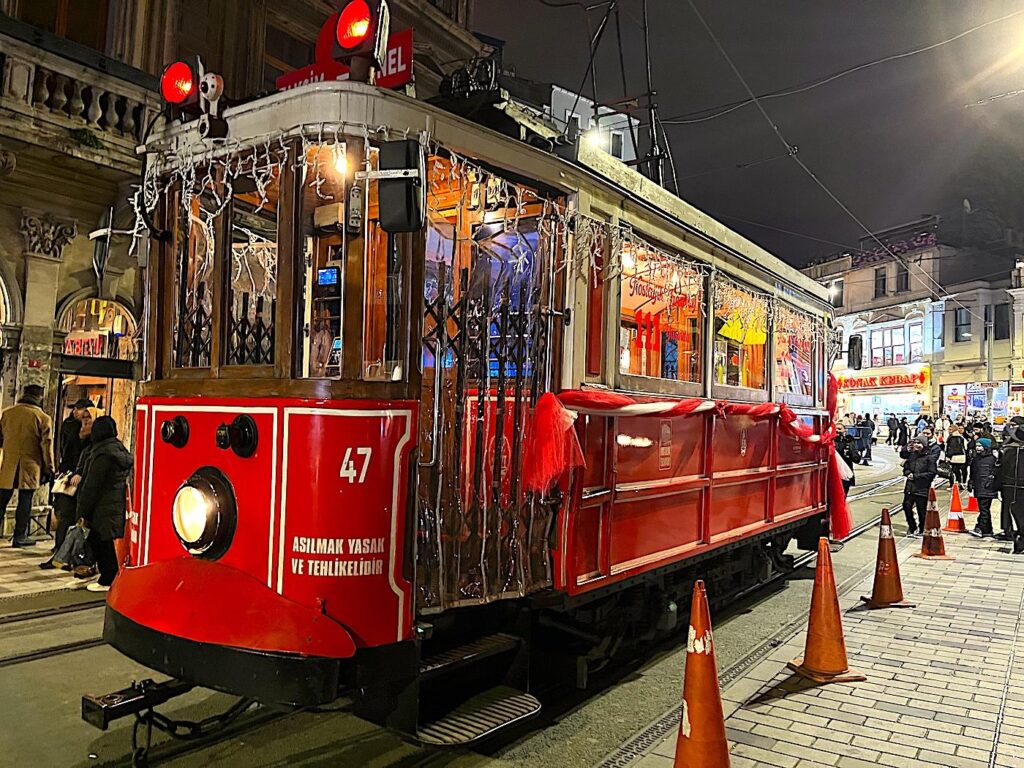
Integration is a key strength of Istanbul’s transport network. The city uses a unified payment system via the Istanbulkart, a smart card that works across all modes of public transportation, enabling seamless transfers between metro, bus, ferry, and more. Major transit hubs such as Yenikapı, Kadıköy, Üsküdar, and Taksim serve as intermodal connection points where passengers can switch between metro lines, ferries, and buses. The Marmaray tunnel, a crucial rail link under the Bosphorus, integrates the suburban rail system and connects the European and Asian sides with direct train service.
Istanbul Transport Network – Table of Contents
Istanbulkart
Istanbulkart, the city’s public transportation card, is the primary payment method. It can be purchased and recharged at kiosks, vending machines, or metro stations. Full details of the Istanbulkart can be accessed from the Istanbulkart official website (in English), which has details of fee pricing policies, links to download the Istanbulkart Apps, and the facility to top up cards. However, due to the complex login process, these activities are generally easier to execute on the ticket machines.
Once you have an Istanbulkart, tap it at the turnstiles or card readers at the metro, metrobus, tram, ferry, train, funicular, or cable car gated entrances or in the case of IETT buses, when boarding the bus, on the electronic panel next to the driver. The system automatically deducts the appropriate fare based on the route, and transfers between other public Istanbul transport (metro, tram, bus) within a specific time are discounted. If you don’t have an Istanbulkart, you can purchase it or single/multi-use tickets at ticket counters or machines at major terminals.
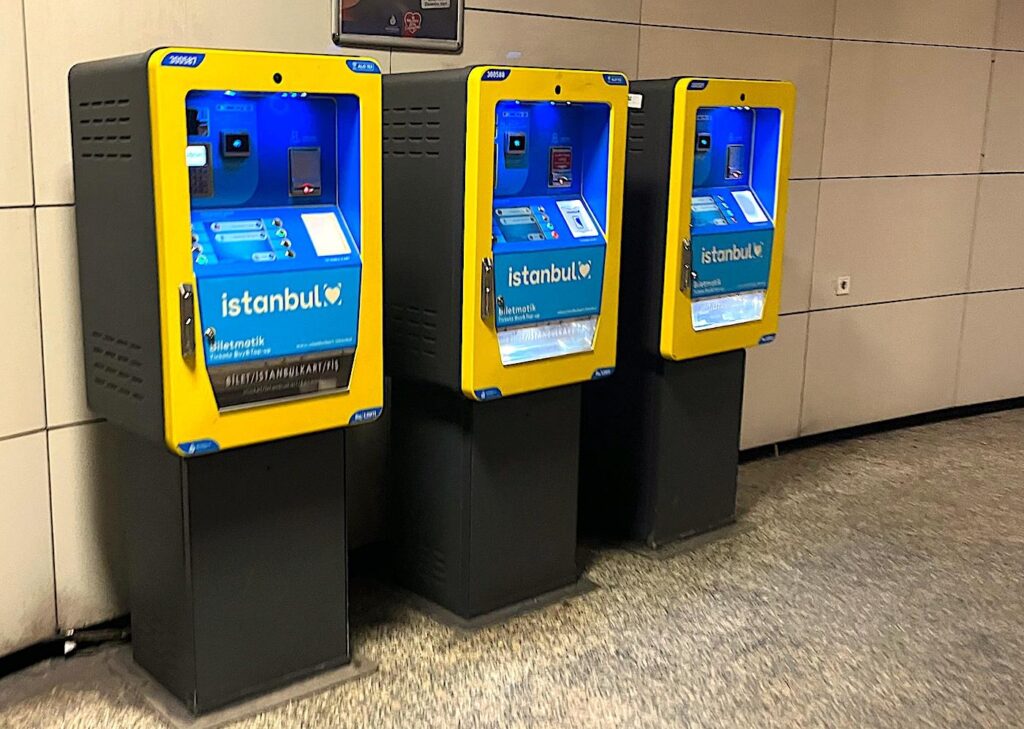



Istanbul Transport Network Fees, Discounts & Refunds
As of April 2025, the fee to buy an Istanbulkart (with zero balance) was the Turkish Lira equivalent of €3.00; the price of a standard single journey using the Istanbulkart was between €0.70 and €1.05, depending on the maximum length of the transport’s route. Subsequent transfers made within 120 minutes of the original tap are discounted at around 40-60%. Night (00:30-05:30) transportation is charged double the standard price. Longer journeys, such as the full length 76km of the Marmaray Train Line, were €1.65, and the Prince’s Island ferry price in April 2025 was the Turkish Lira equivalent of €2.05. The general single-use tickets were €0.95, with multiple tickets up to a ten-pass ticket being €7.00.
With the Istanbulkart, passengers can benefit from transfer discounts within a 120-minute (2-hour) window after the first validation. During this period, if you switch from one form of public transport to another line or mode of transport, you pay a reduced fare for each subsequent ride, provided the transfer is within the allowed time, with a maximum of up to five transfers, each costing progressively less than the previous.
Fares are generally distance-based; the maximum distance/fare possible on the line you enter is deducted when you tap in at the start of your journey. You’re eligible for a partial fare refund if you do not travel the whole route. To get this credit back, you must tap your Istanbulkart on the fare refund machines (İade Cihazı) just past the exit gates at the station where you get off. The machine calculates the distance you travelled on Istanbul transport and instantly refunds the difference to your card balance.
Istanbul Metro System
The Istanbul Metro system is a rapidly expanding and modern rail network that plays a crucial role in urban mobility, connecting key business districts, residential areas, and transit hubs across the city. Operated by Metro Istanbul, the system includes several lines designated by the letter M followed by a number (e.g., M1, M2, M4). The metro offers fast, clean, and efficient service with air-conditioned, high-capacity trains running frequently. Stations are equipped with clear signage, accessibility features, and real-time information screens, and the entire network is fully integrated with other modes of public Istanbul transport via the Istanbulkart. The metro is especially effective at avoiding the city’s notorious road traffic, making it a preferred option for daily commuters and visitors.
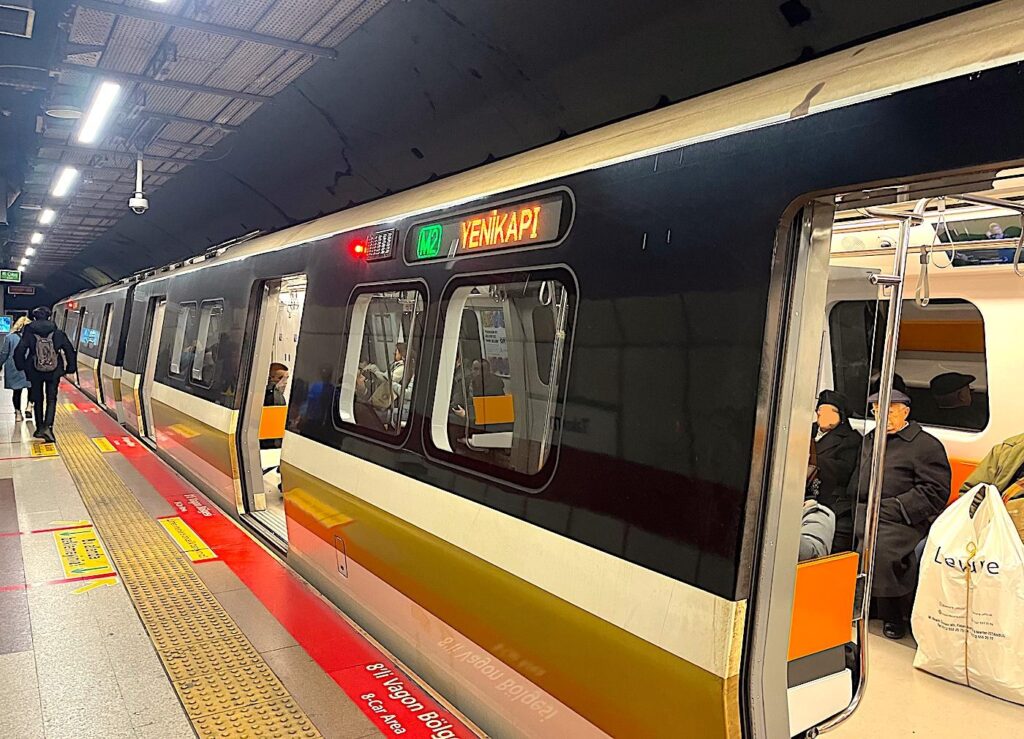
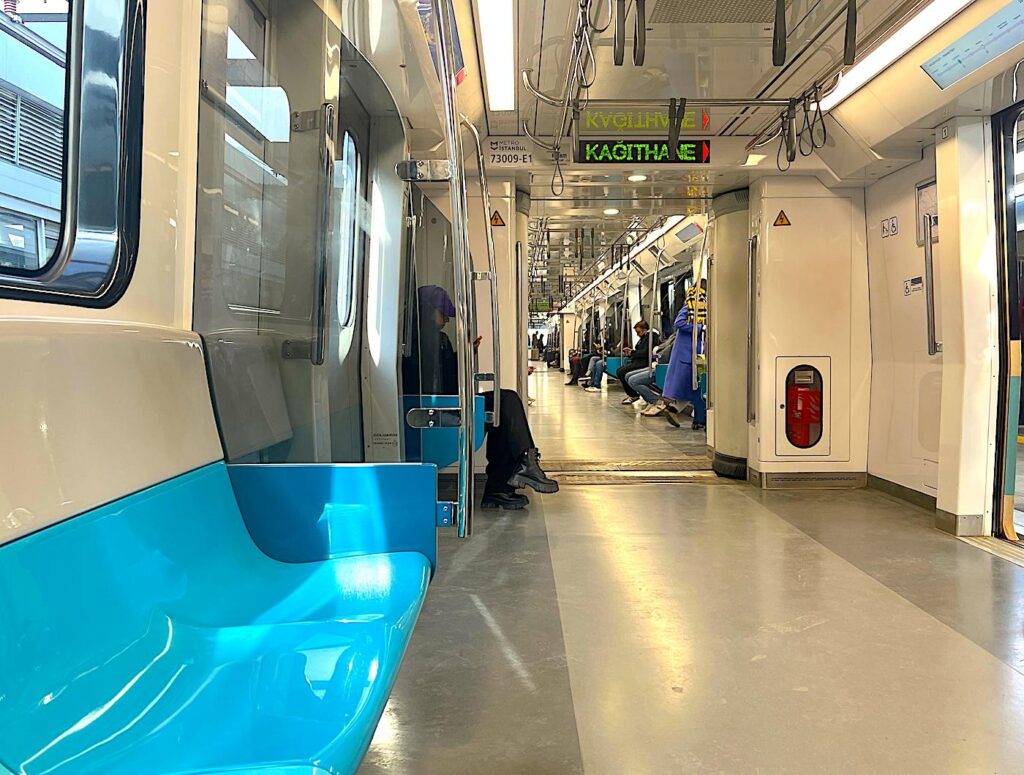
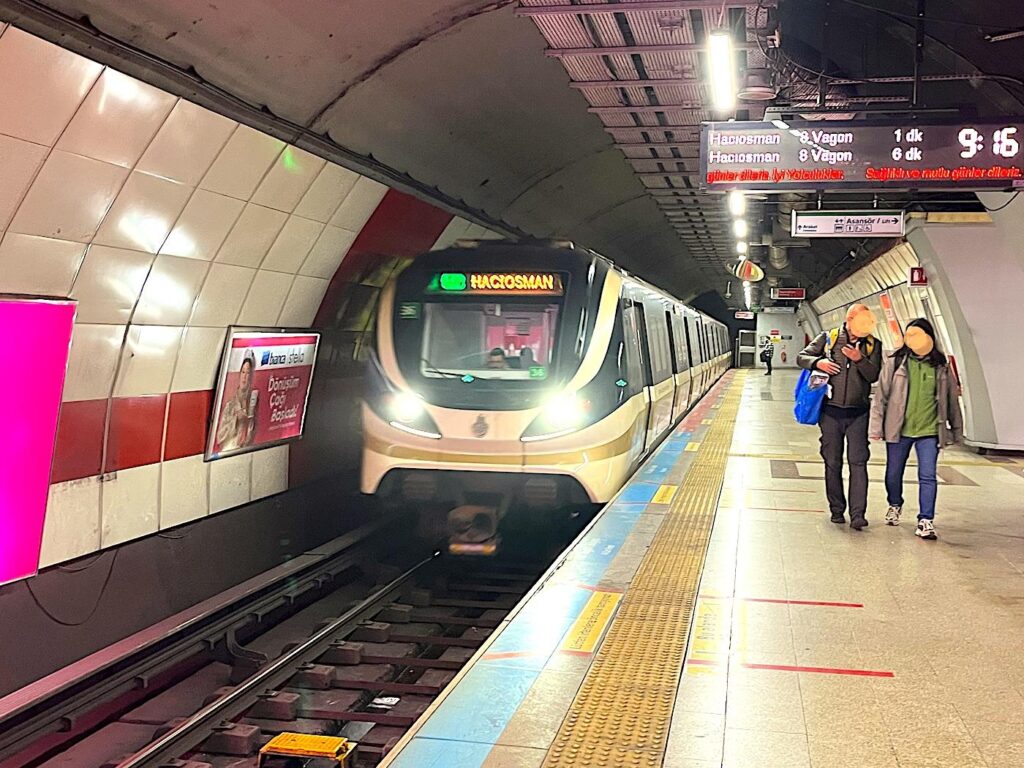
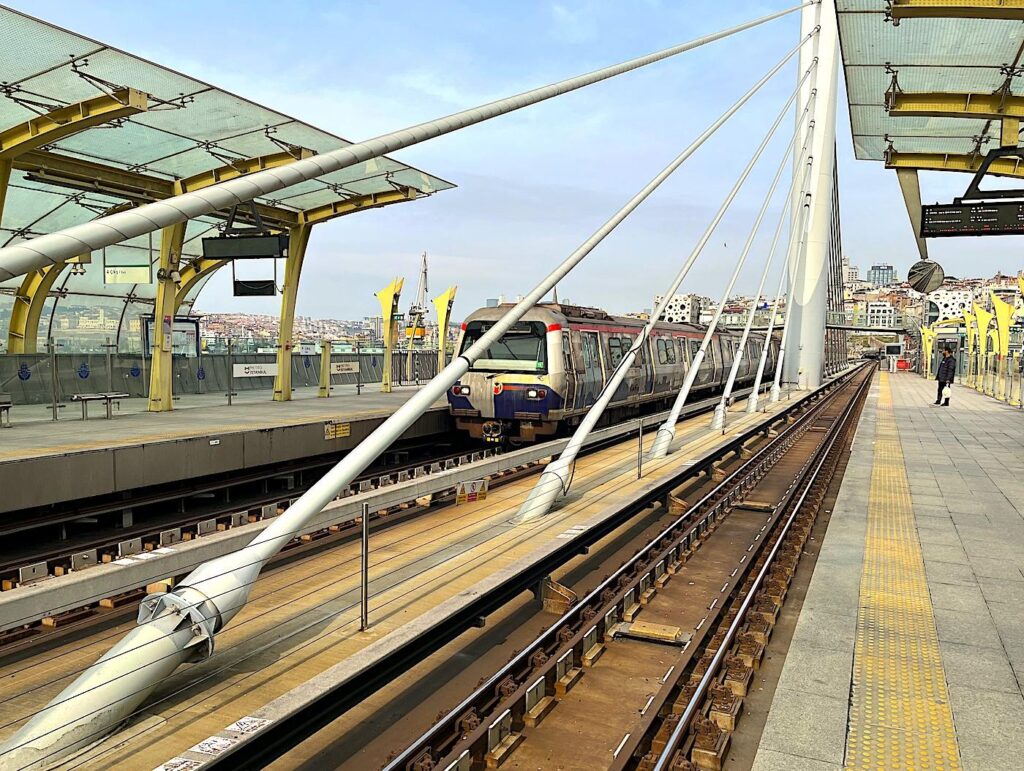
Several metro lines offer tourists convenient access to major attractions and lively neighbourhoods. The M2 line (Yenikapı–Hacıosman) is perhaps the most useful, with stops at Taksim, Şişli, and Levent, providing easy access to shopping, nightlife, and cultural venues. The M1A line (Yenikapı–Atatürk Airport) passes through historical neighbourhoods like Aksaray. It connects directly to the old airport (now mainly used for exhibitions) and to Yenikapı, a significant transfer hub for ferries and the Marmaray trains. On the Asian side, the M4 line (Kadıköy–Tavşantepe)connects visitors to the vibrant Kadıköy district, known for its markets, eateries, and artsy vibe. Additionally, the M7 line (Mecidiyeköy–Mahmutbey) provides access to dynamic urban neighbourhoods like Çağlayan and Alibeyköy.
Istanbul Metrobus
The Istanbul Metrobus system is a dedicated bus rapid transit (BRT) line that plays a crucial role in the city’s public transportation network by providing fast, high-capacity service across long distances. Running along a 52 kilometre corridor from Beylikdüzü on the European side to Söğütlüçeşme on the Asian side, the Metrobus travels on a dedicated lane in the centre of major highways, avoiding regular traffic congestion.
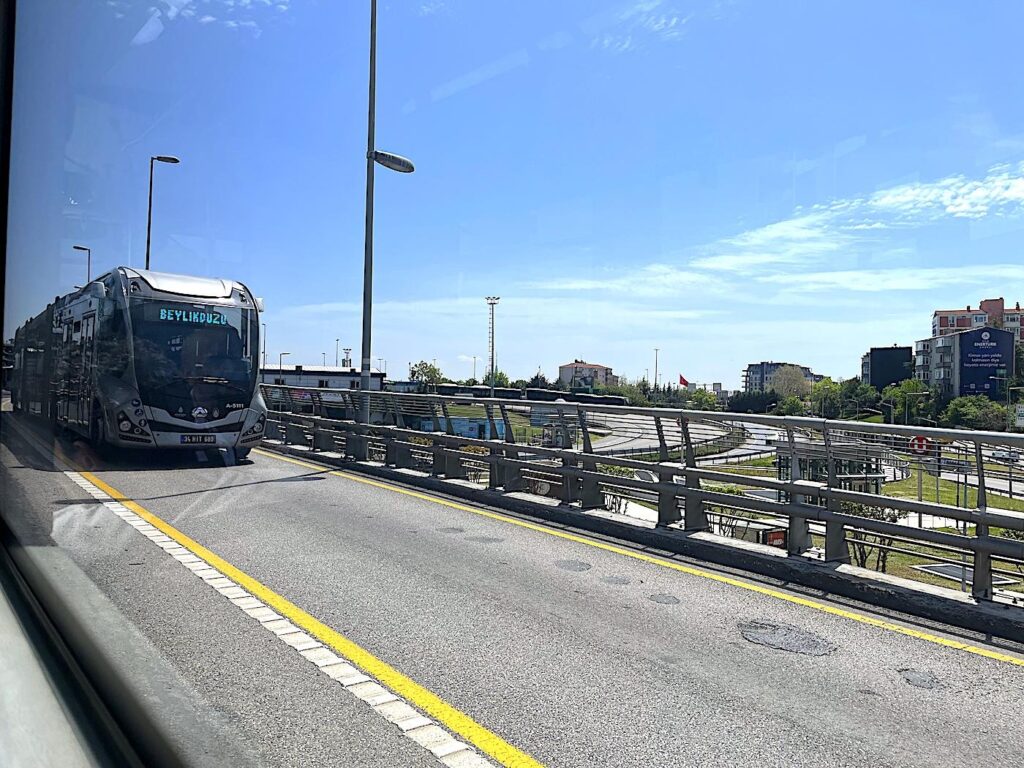

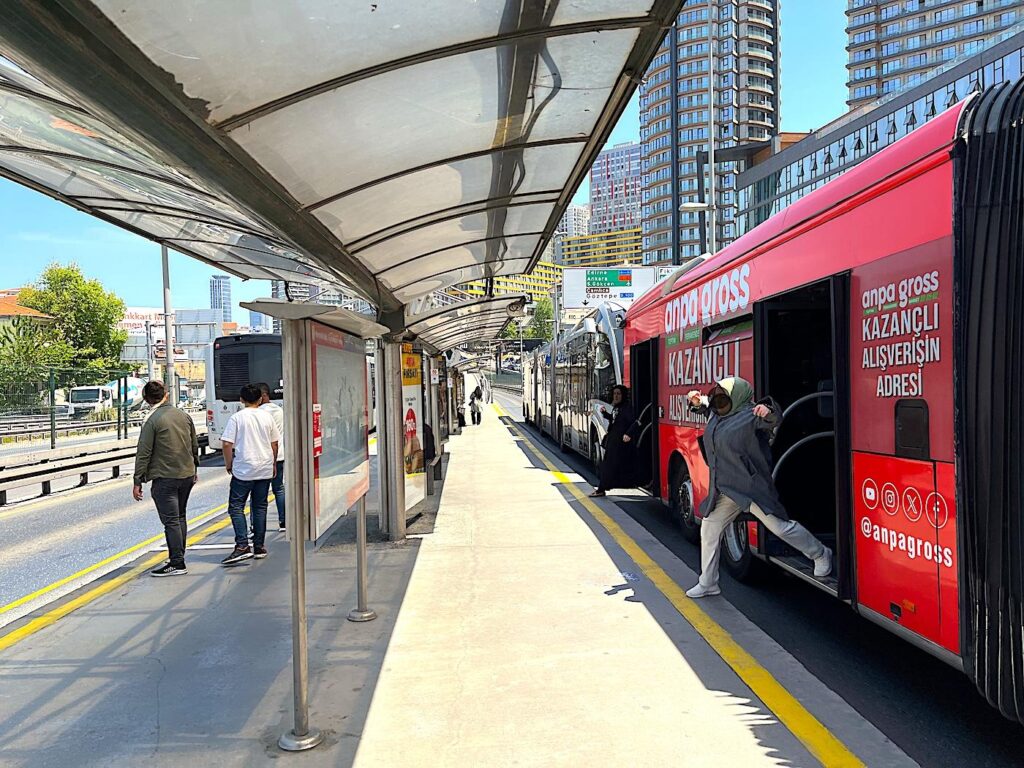
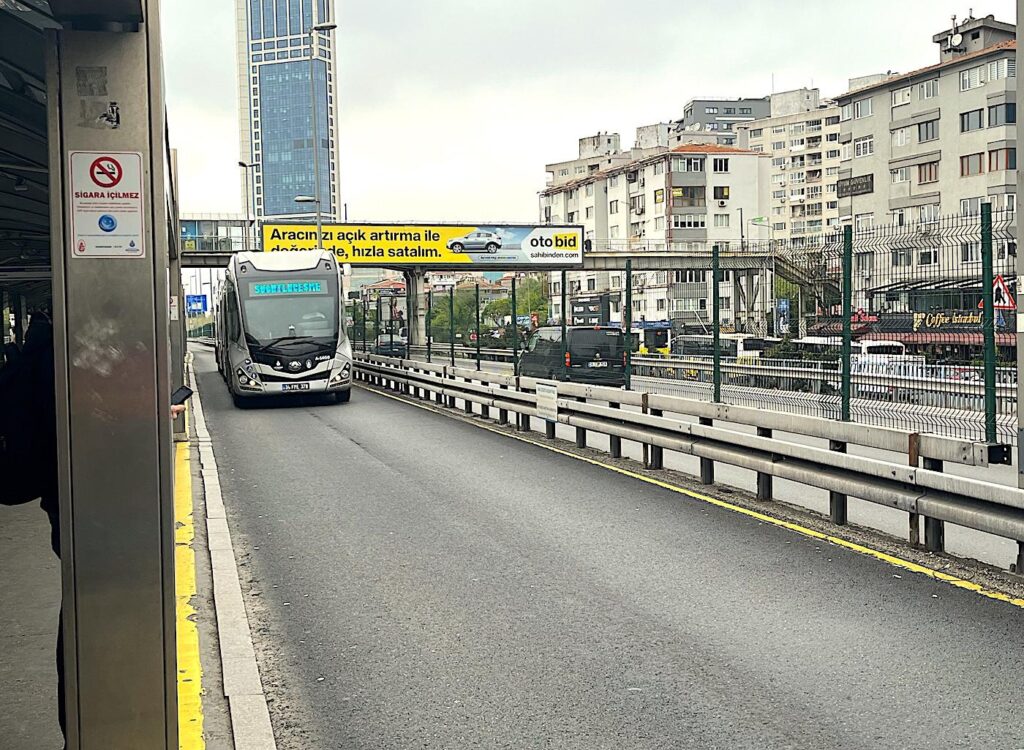

IETT operates the Metrobus fleet, which includes articulated and environmentally friendly buses capable of carrying many passengers, especially during peak hours. One of the line’s key features is its crossing of the 15 Temmuz Şehitler Bosphorus Bridge, making it one of the few public transport services that offer rapid and uninterrupted transit between the two continents.
Integration is a defining strength of the Metrobus system. It connects with several metro lines, tram lines, and the Marmaray rail system, providing seamless transfers at major stations like Zincirlikuyu, Şişli-Mecidiyeköy, Cevizlibağ, and Uzunçayır. The system operates with the Istanbulkart, and high-frequency service ensures minimal wait times, often under a minute, even during off-peak hours. Thanks to its reliability and speed, especially during rush hours when surface traffic slows other buses, the Metrobus has become one of Istanbul’s most vital and heavily used transport arteries.
Istanbul Tram System
The Istanbul Tram system is an essential component of the city’s public transportation network, especially in high-density urban areas and historical districts where heavy rail or metro lines are impractical. Operated by Metro Istanbul, the tram network includes several lines, with the T1 line (Bağcılar–Kabataş) being the most prominent. This line connects essential cultural and tourist areas such as Sultanahmet, Eminönü, and Gülhane, providing easy access to landmarks like the Blue Mosque, Hagia Sophia, and the Grand Bazaar. Other tram lines include T4 (Topkapı–Mescid-i Selam), which serves the city’s northwestern neighbourhoods, and the newer T5 (Eminönü–Alibeyköy) line that runs along the Golden Horn.
The T2 heritage tram, officially known as the Taksim–Tünel Nostalgia Tramway, is a short, 1.6 km historic tram line that runs along the pedestrianised İstiklal Avenue in Istanbul’s Beyoğlu district, connecting Taksim Square to Tünel Square and offering passengers a charming ride through one of the city’s most iconic streets.

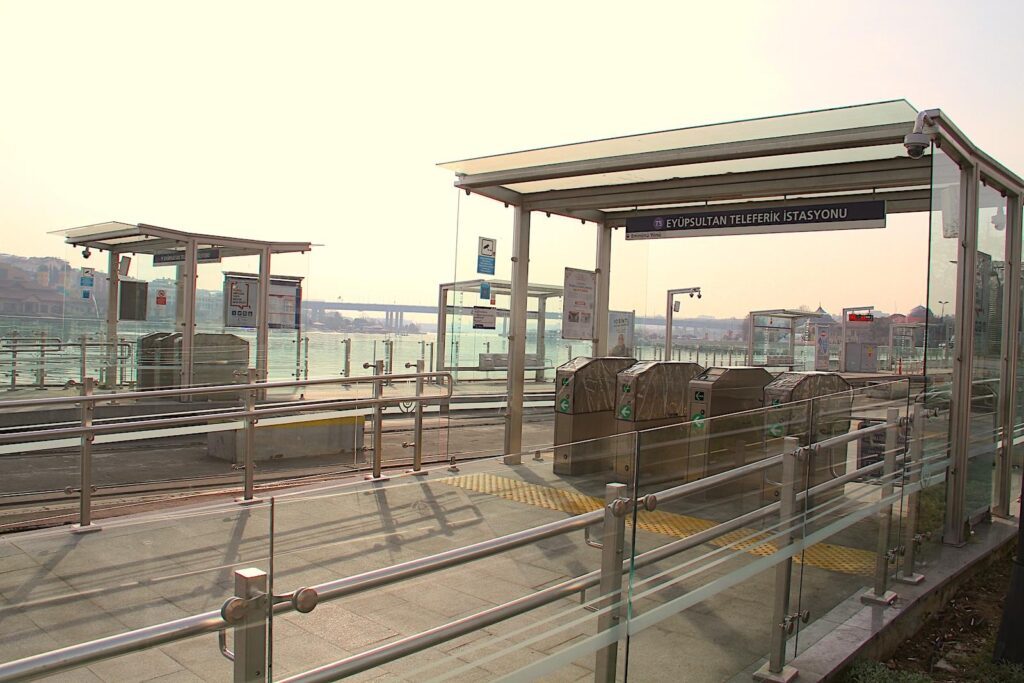

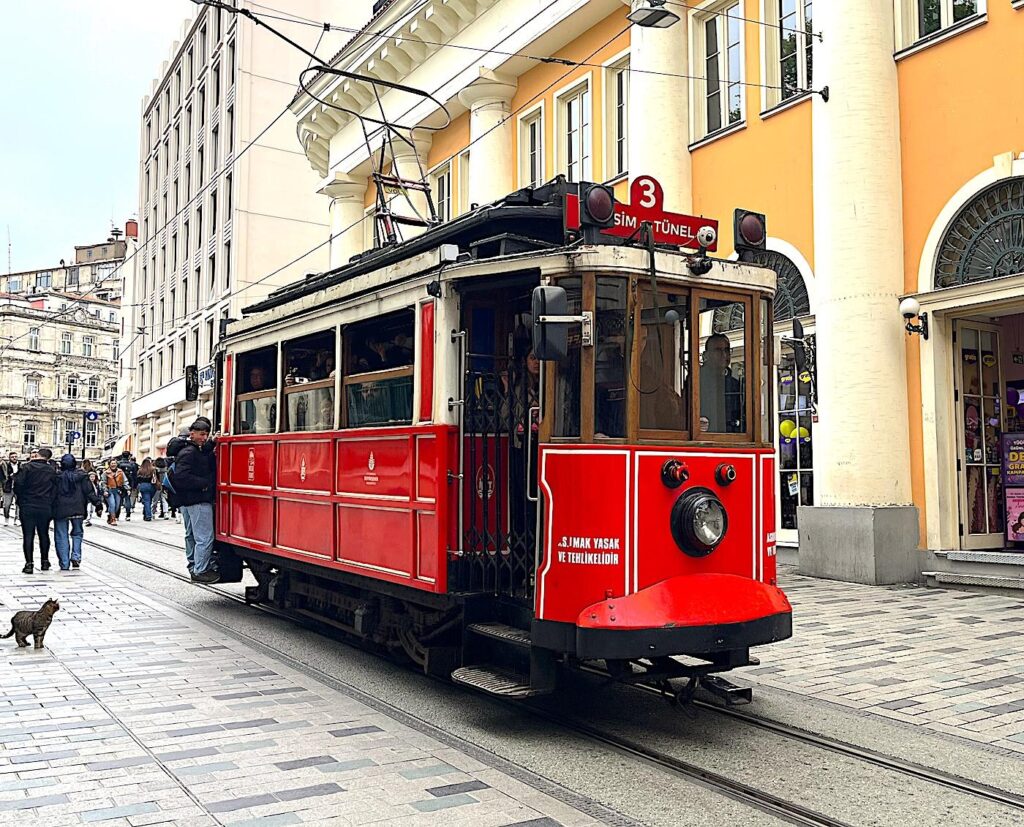

The tram system fully integrates with Istanbul’s broader transport network, allowing seamless transfers to metro lines, funiculars, ferries, Metrobus, and Marmaray trains. Key interchange stations such as Kabataş, Eminönü, and Topkapı facilitate smooth transitions between transport modes. Passengers use the Istanbulkart for fare payments across the tram lines, and real-time updates are provided through station displays and mobile apps. With the exception of the heritage tram, the trams are modern, low-floor vehicles designed for comfort, accessibility, and high-frequency service.
IETT Bus System
The IETT bus system is the backbone of Istanbul’s public transportation, covering extensive areas across both the European and Asian sides of the city, including places not yet reached by metro or tram lines. Operated by the Istanbul Electric Tram and Tunnel Company (IETT), the bus network consists of thousands of vehicles serving hundreds of routes that range from urban express lines to local neighbourhood services.
The buses are integrated into the Istanbulkart system, allowing seamless transfers with metros, trams, ferries, and the Metrobus. Buses are equipped with digital route displays, often including real-time arrival screens at major stops. While traffic congestion can affect Istanbul transport travel times, the bus network remains crucial for reaching residential, historic, and hilly areas less accessible by rail.
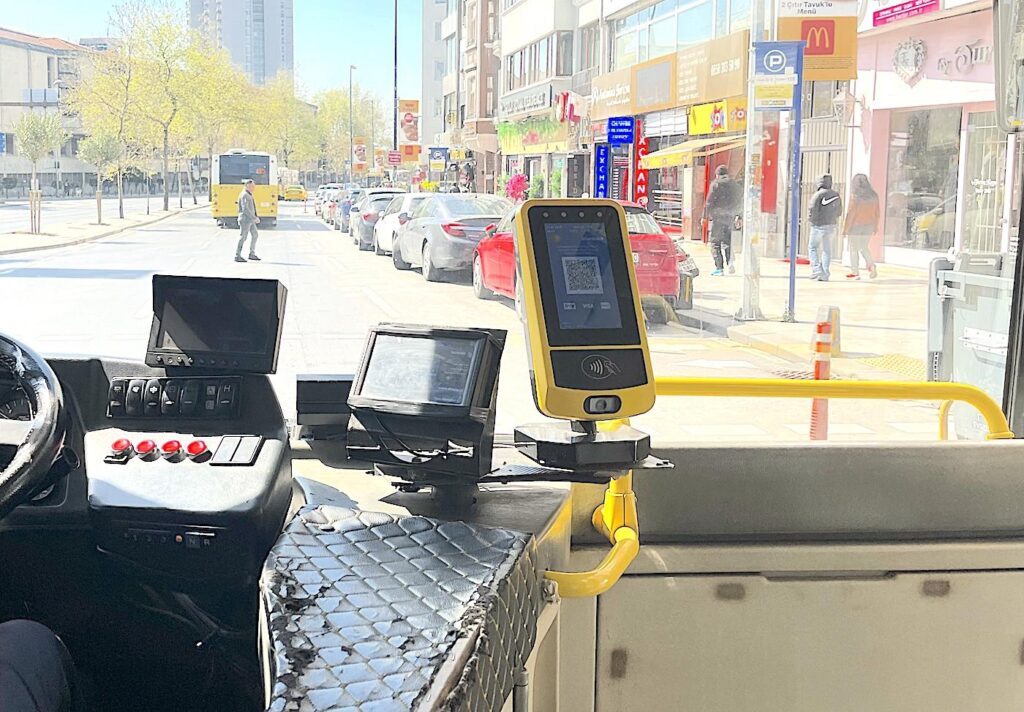

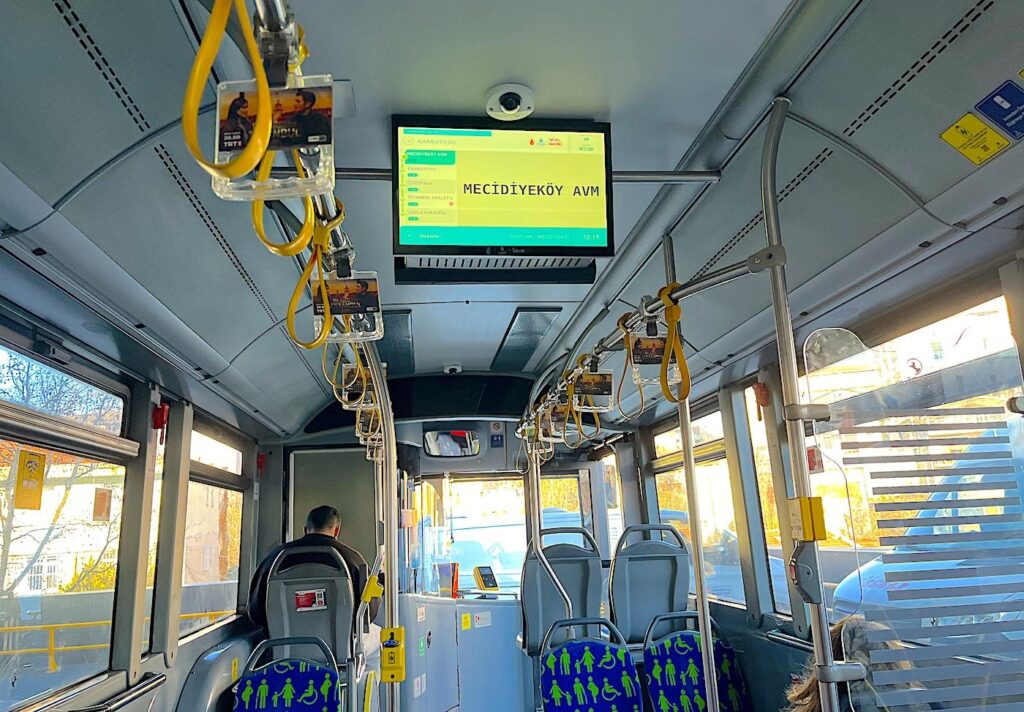
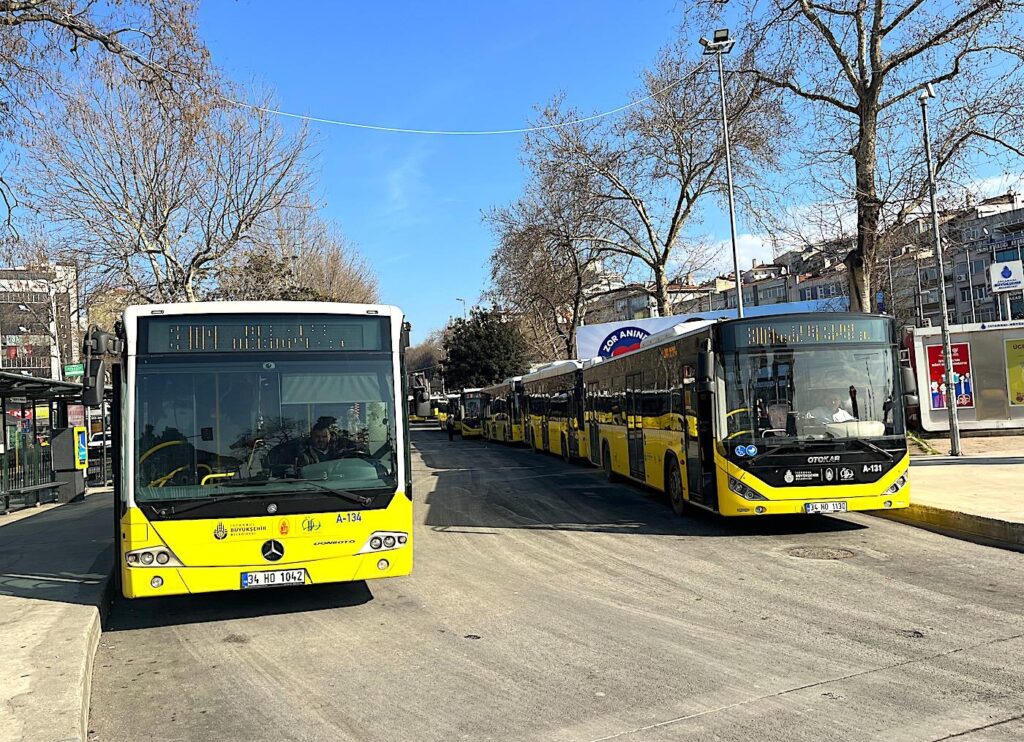
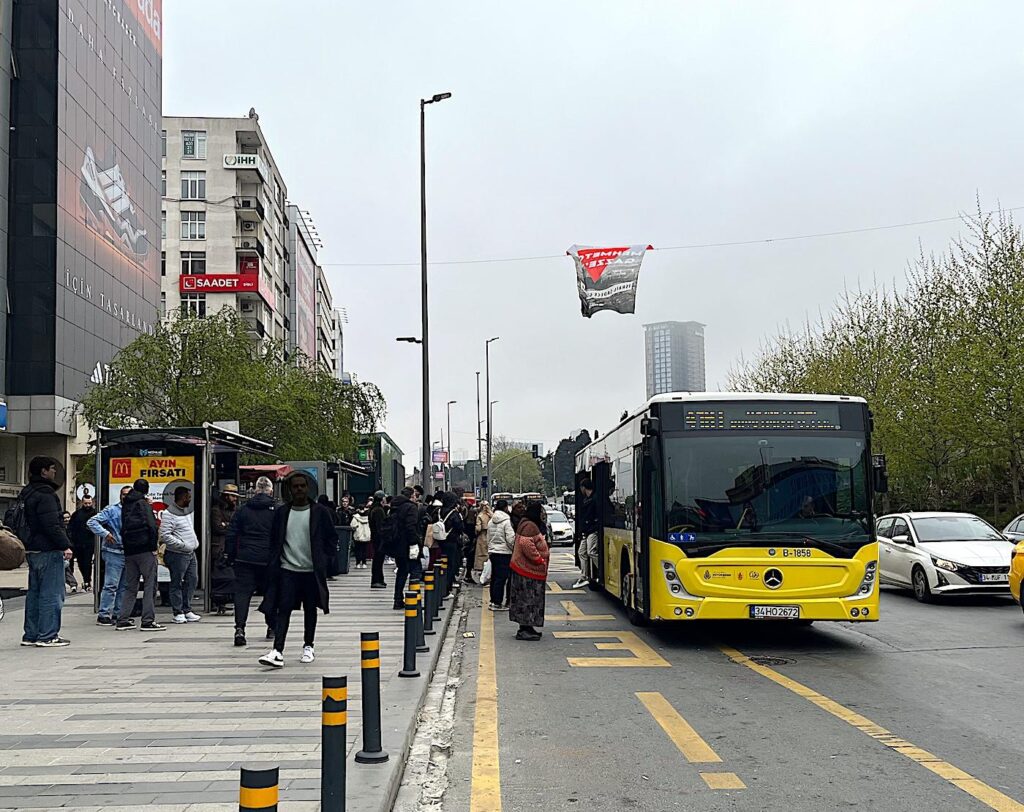
Several IETT routes are fascinating and scenic for tourists. The 28T (Topkapı–Beşiktaş) route passes through Istanbul’s historic core and offers views of landmarks such as the old city walls and Dolmabahçe Palace. The 87 (Taksim–Yıldız) line is an excellent option for experiencing vibrant neighbourhoods like Harbiye and Nişantaşı.
On the Asian side, the 14F (Kadıköy–Fenerbahçe) offers a relaxing ride through coastal neighbourhoods, ideal for reaching popular parks and seaside cafés. Another standout is the Bus 99A (Eminönü–Cevizlibağ), which travels along the Golden Horn and provides scenic glimpses of Ottoman architecture and daily life in the city’s historical quarters. These Istanbul transport routes combine practical transportation with rich visual experiences, making them a great way to explore Istanbul beyond typical tourist zones.
Istanbul Ferries
For more details on the Istanbul Ferry system, see also: LikeTürkiye.com – Istanbul Ferry.
The Istanbul ferry network is integral to the city’s public transportation system, connecting various districts across its European and Asian shores. The primary operator, Şehir Hatları, manages numerous lines, including the Golden Horn Line (Haliç Hattı) and Bosphorus Line (Boğaz Hattı). While both are regular commuter services, they offer the best opportunity to see Istanbul’s stunning skyline, and, at the equivalent of approximately €1.00 per journey, undoubtedly provide Istanbul’s best value-for-money tourist experiences.

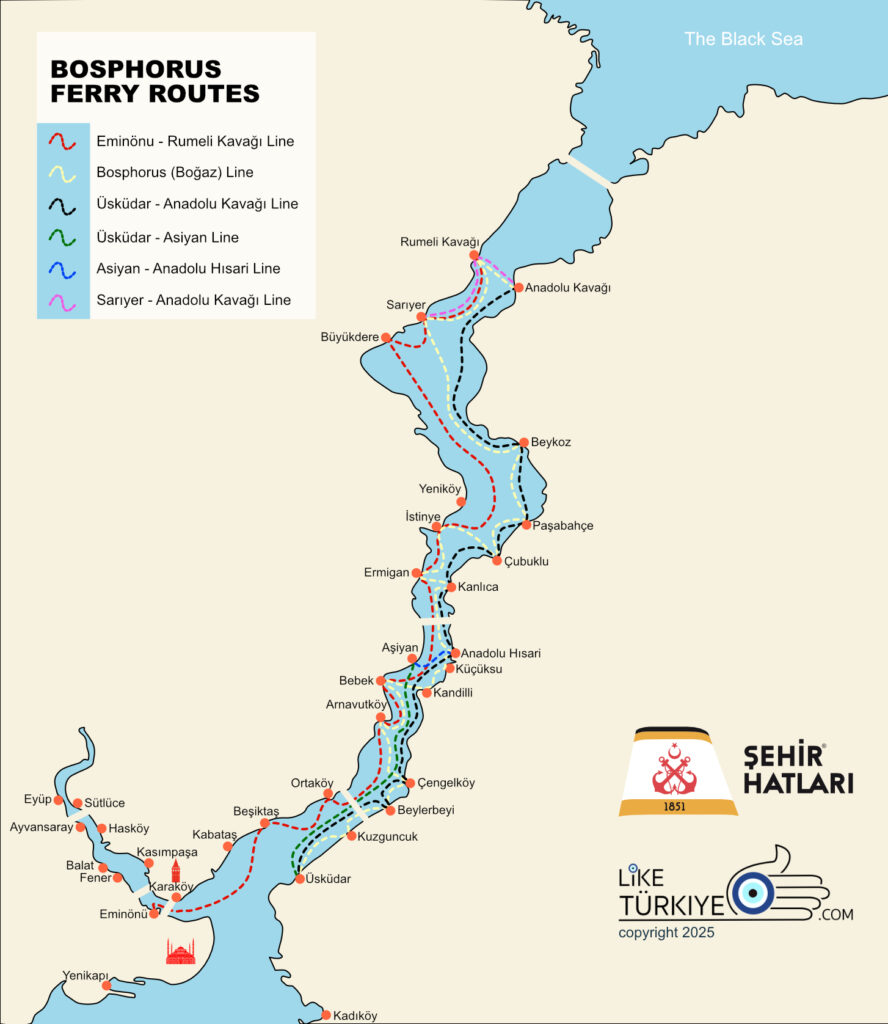
These voyages up and down the Golden Horn and Bosphorus waterways are less frequent than the cross-Bosphorus Istanbul ferry lines and require some advanced planning. Still, they offer spectacular panoramic views of Istanbul’s historic sites and waterfronts.
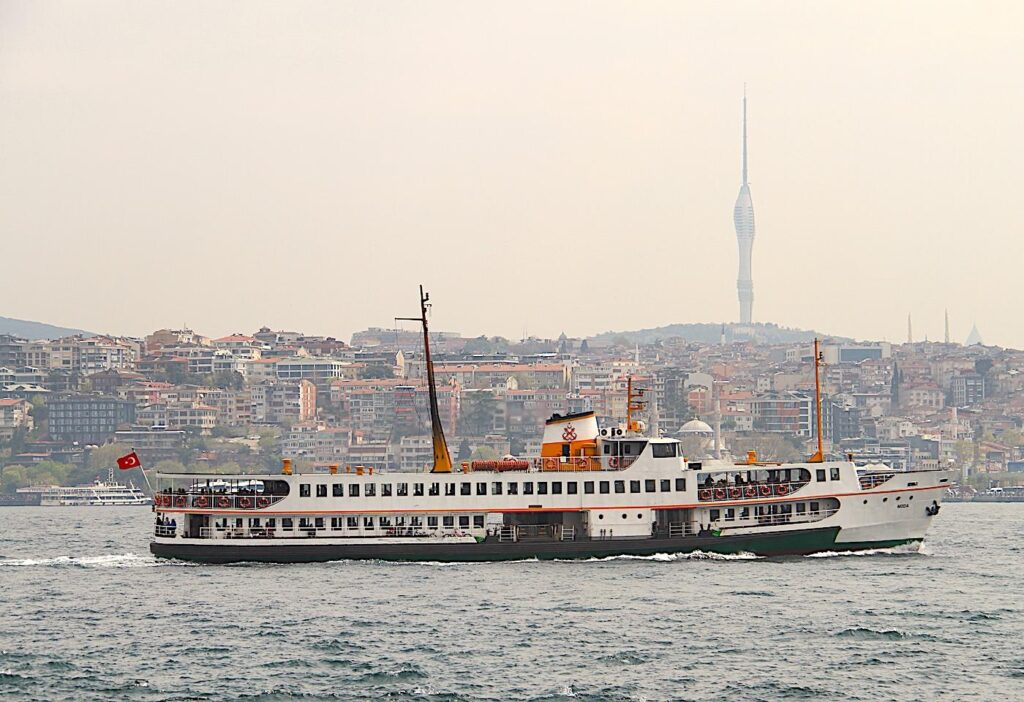
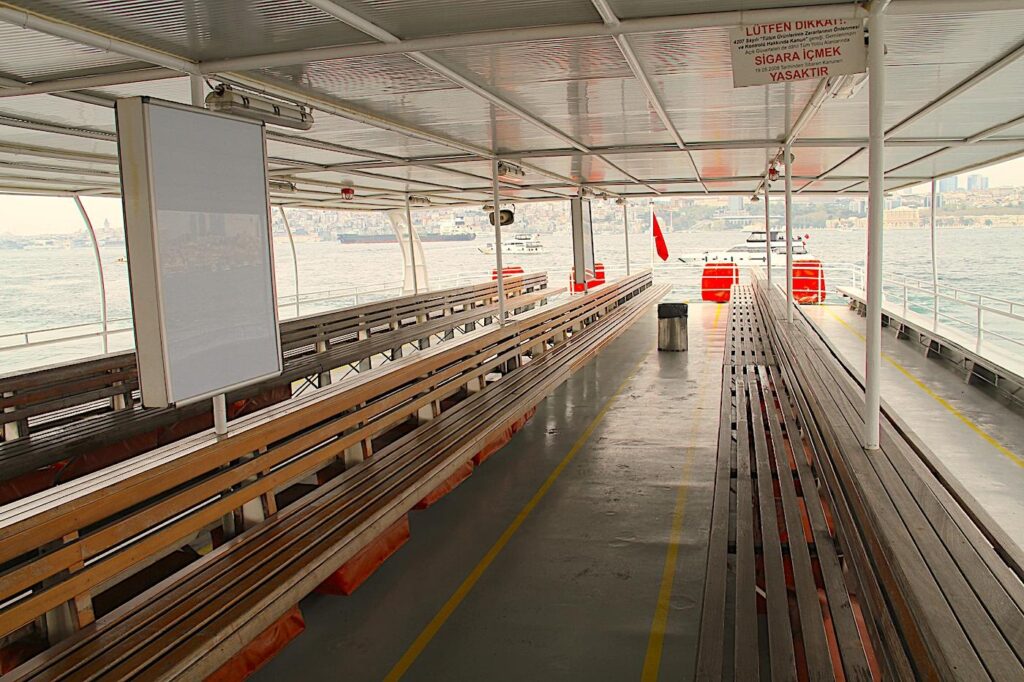
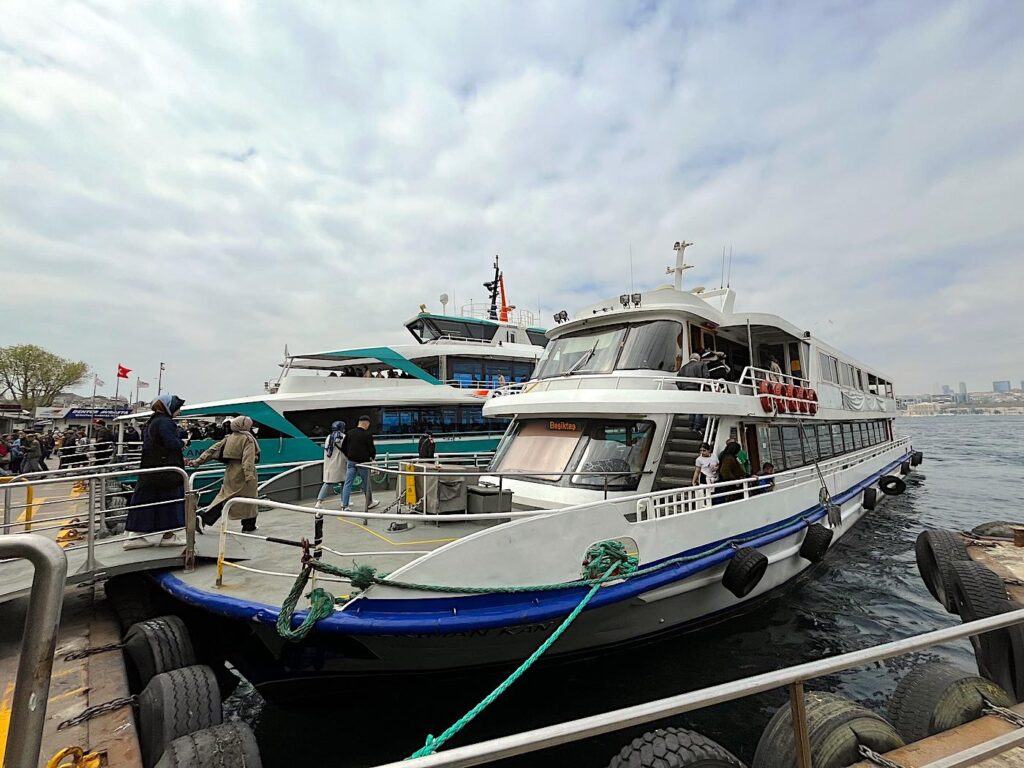


Marmaray Trains
The Marmaray train system is one of Istanbul’s most ambitious and transformative transportation projects, providing a continuous commuter rail line that connects the European and Asian sides of the city through an undersea tunnel beneath the Bosphorus Strait. Officially launched in 2013 and extended in subsequent years, the Marmaray stretches from Halkalı in the west to Gebze in the east, covering over 76 kilometres. This line is the backbone for Istanbul’s regional rail transit, linking suburban districts with central hubs and significantly reducing travel time. The system operates with modern, high-capacity electric trains and features air-conditioned, accessible carriages designed for daily commuters.
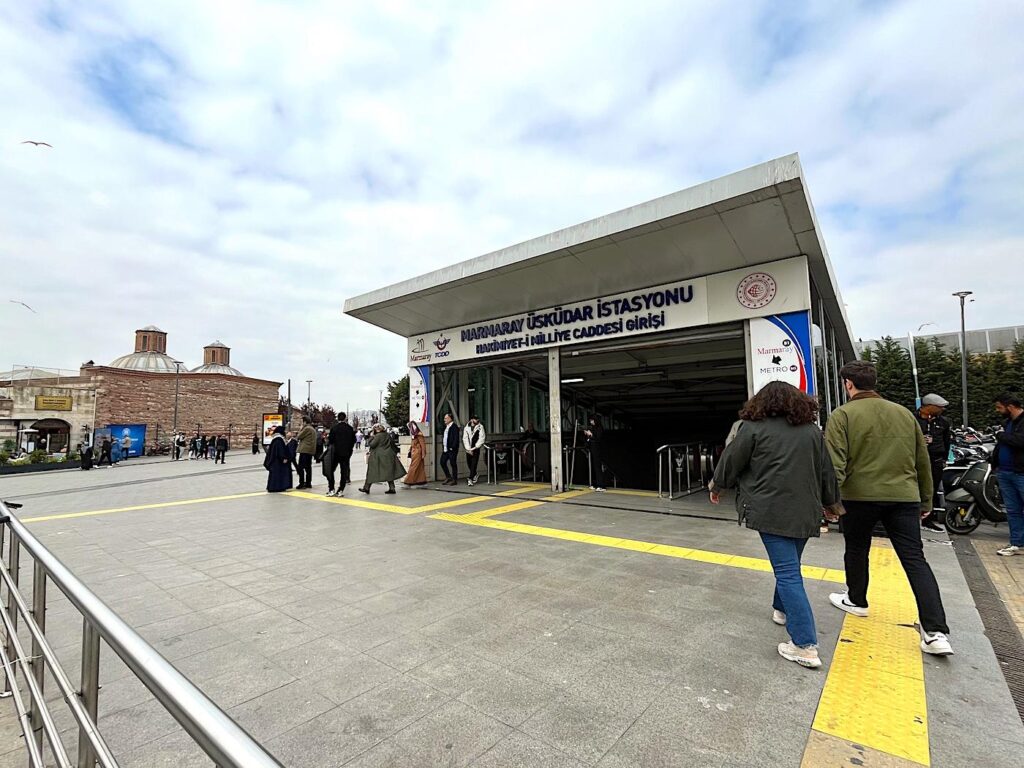
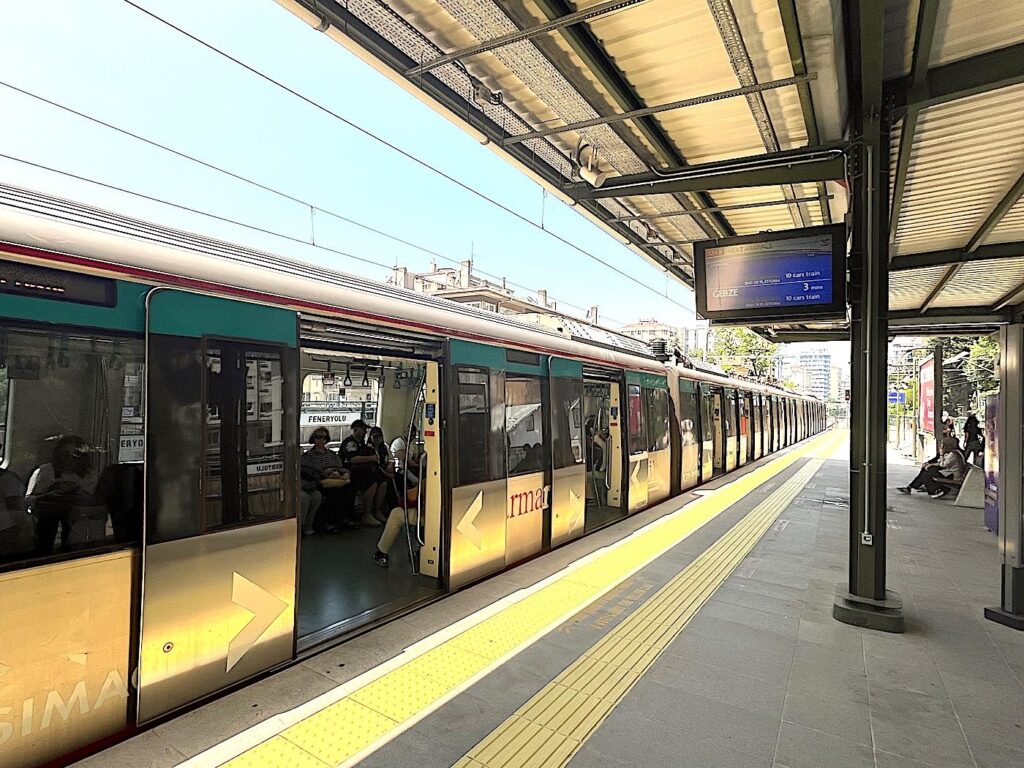
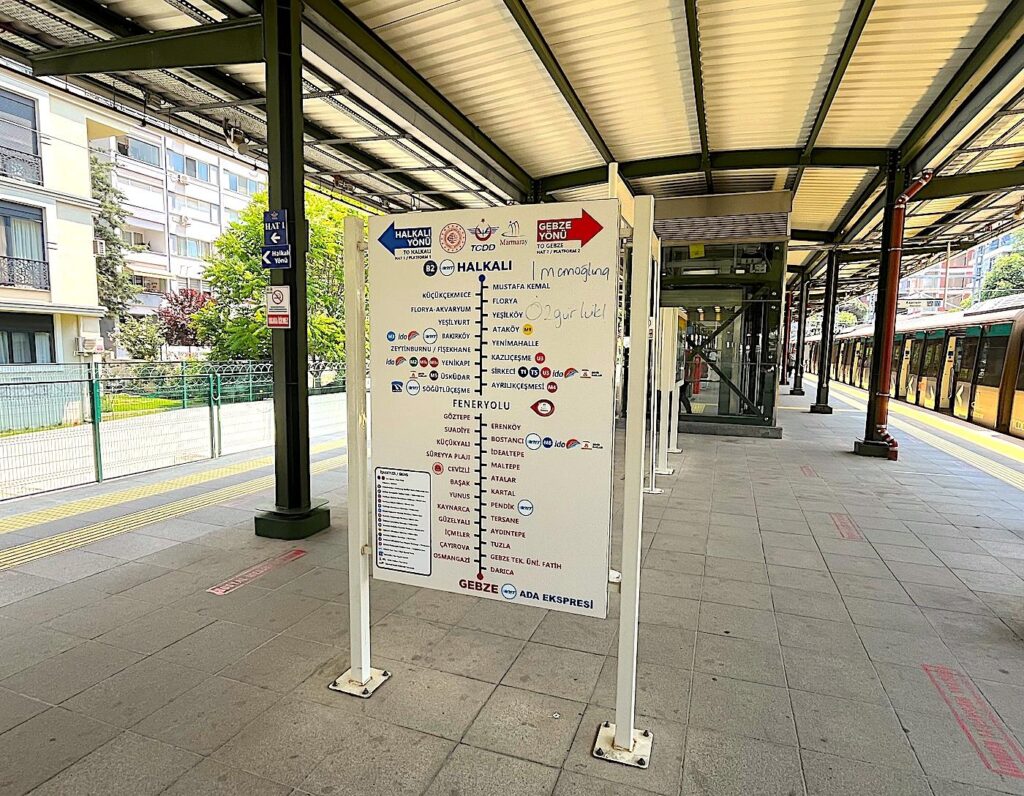


Marmaray is fully integrated into the city’s public transportation network. It connects with multiple metro lines, trams, buses, and ferries, enabling smooth transfers across modes using the Istanbulkart. Key interchange stations like Yenikapı, Üsküdar, and Söğütlüçeşme serve as major transit hubs. The line not only eases congestion on the bridges but also enhances urban mobility for residents living in outlying areas, promoting sustainable commuting patterns. Additionally, Marmaray supports intercity travel by linking with high-speed trains (YHT) at stations like Gebze and Pendik, making it a crucial corridor for Istanbul and the broader Marmara Region.
Istanbul Funiculars and Cable Cars
Istanbul’s funicular systems are vital in navigating the city’s steep terrain, especially between key transportation and cultural hubs. The most notable is the Tünel (F2), one of the oldest underground funiculars in the world, operating since 1875. It connects Karaköy near the Golden Horn with Beyoğlu at the top of the hill, offering a short but essential ride for locals and tourists. Another important line is the F1 funicular, which links Kabataş, a ferry and tram terminal on the Bosphorus, with Taksim Square, a major metro and bus interchange.
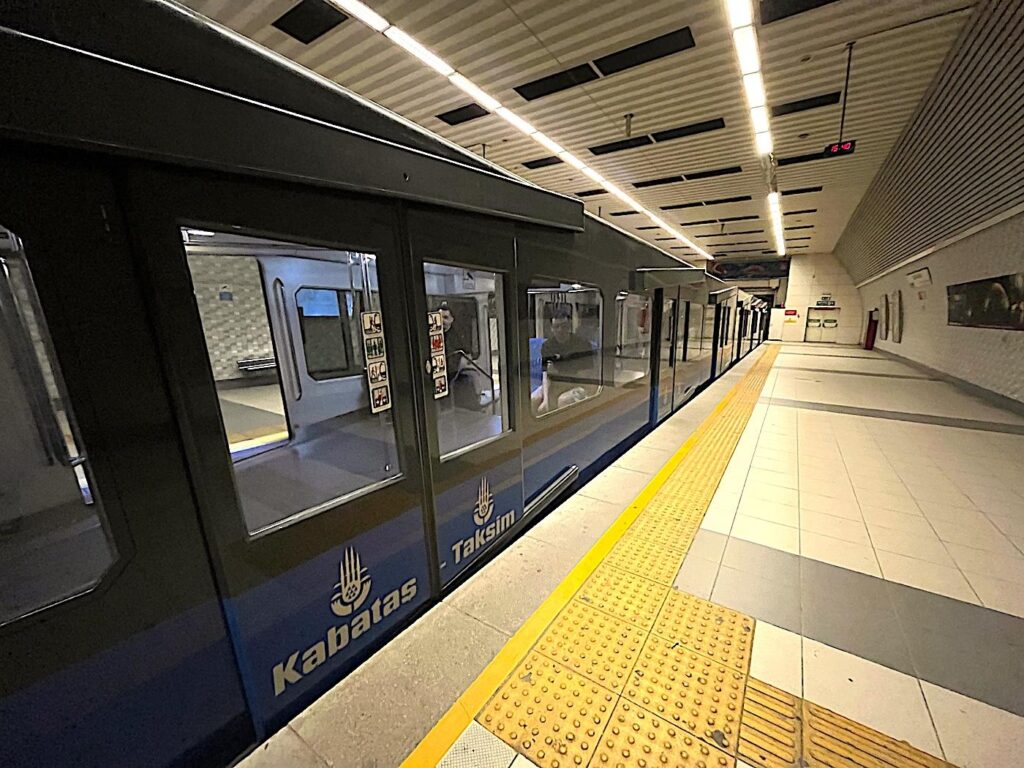
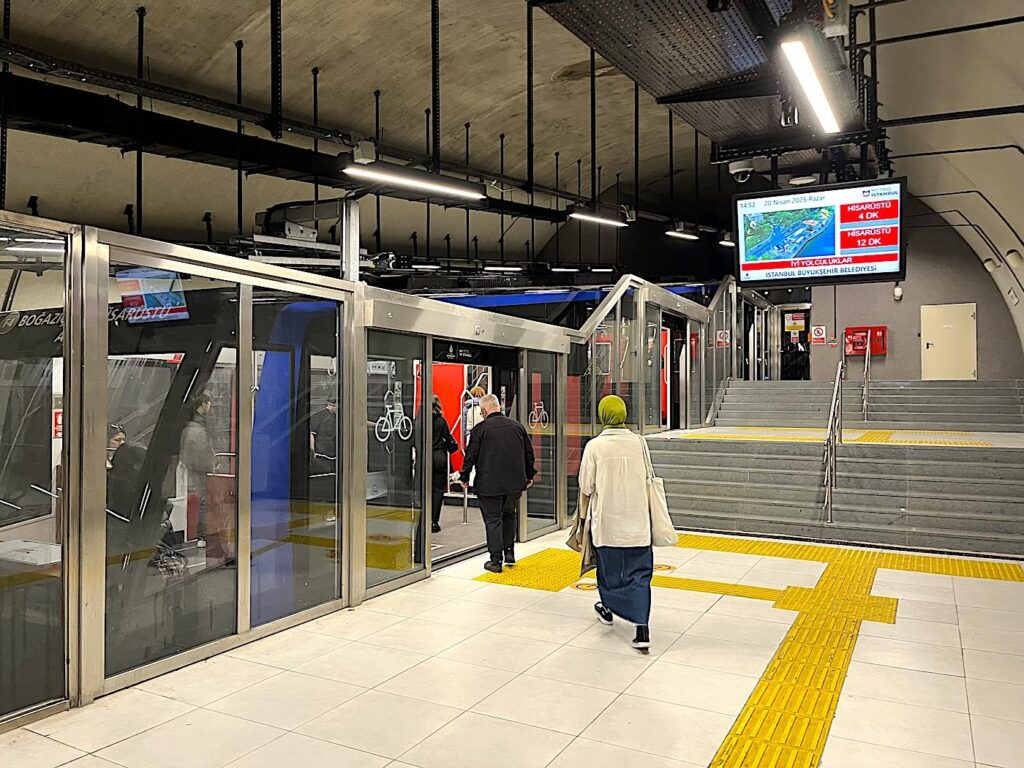
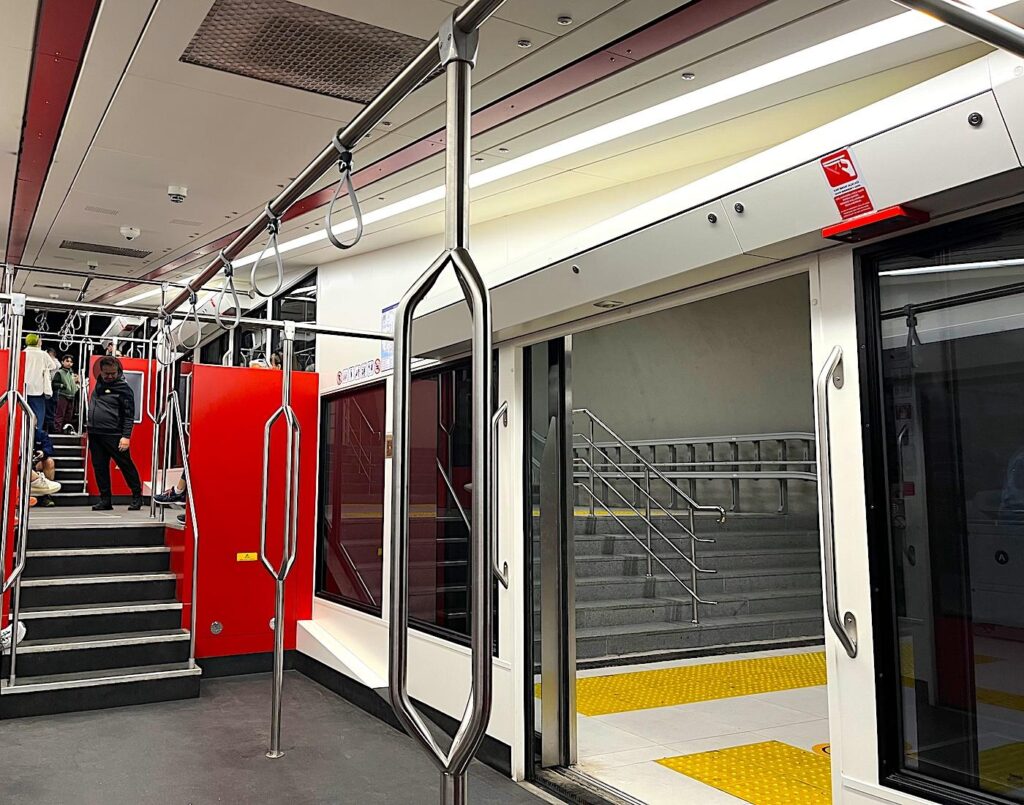
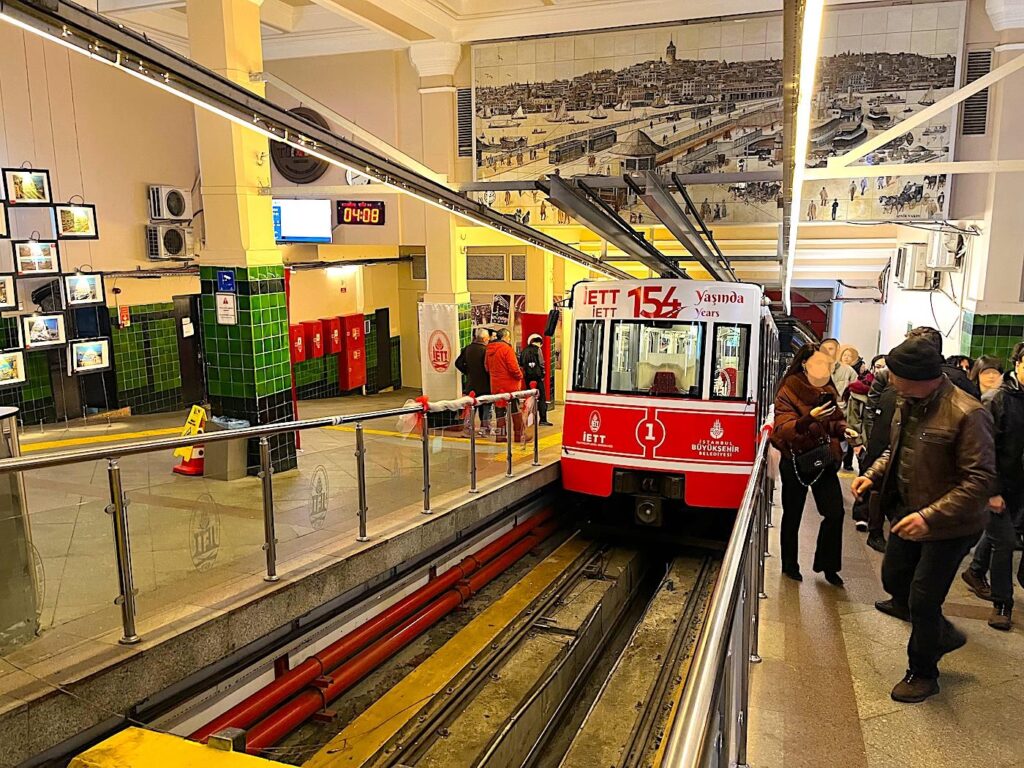
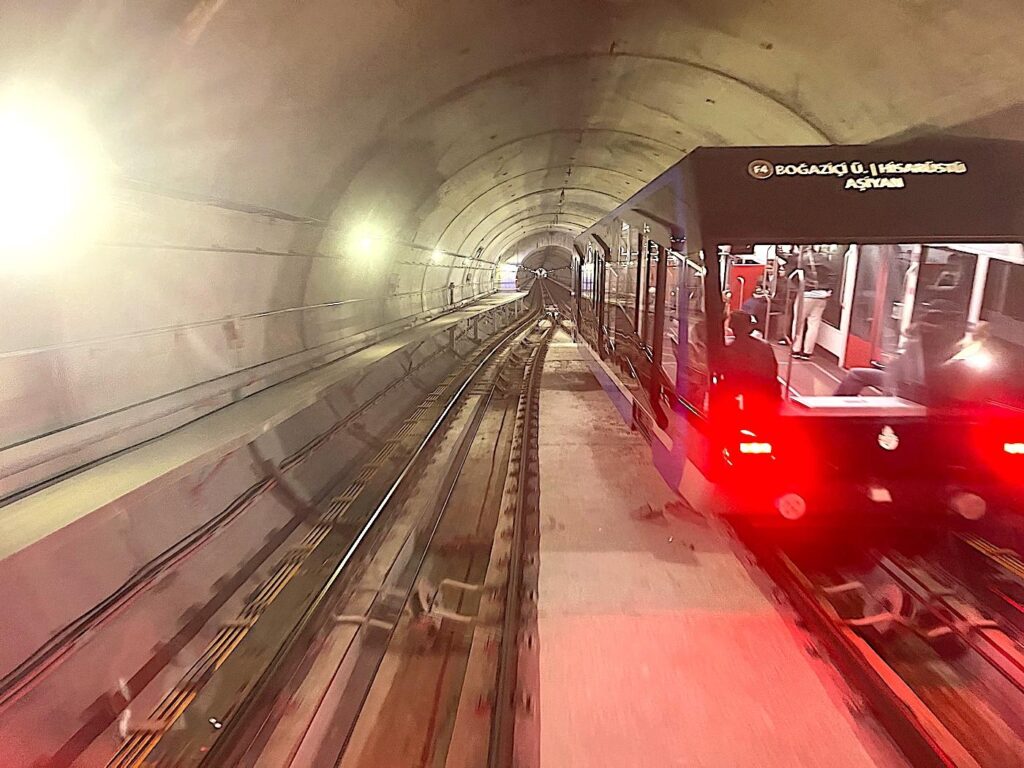
The F4 connects Boğaziçi University–Hisarüstü with Aşiyan on the Bosphorus, providing a quick and scenic Istanbul transport link between the hillside campus area and the waterfront promenade, ferry and Rumeli Fortress. These cable cars serve as tourist attractions and functional transport links, particularly in areas where road access is limited by geography. These funiculars are fully integrated into the Istanbulkart system, making transfers between other modes of transport quick and efficient.
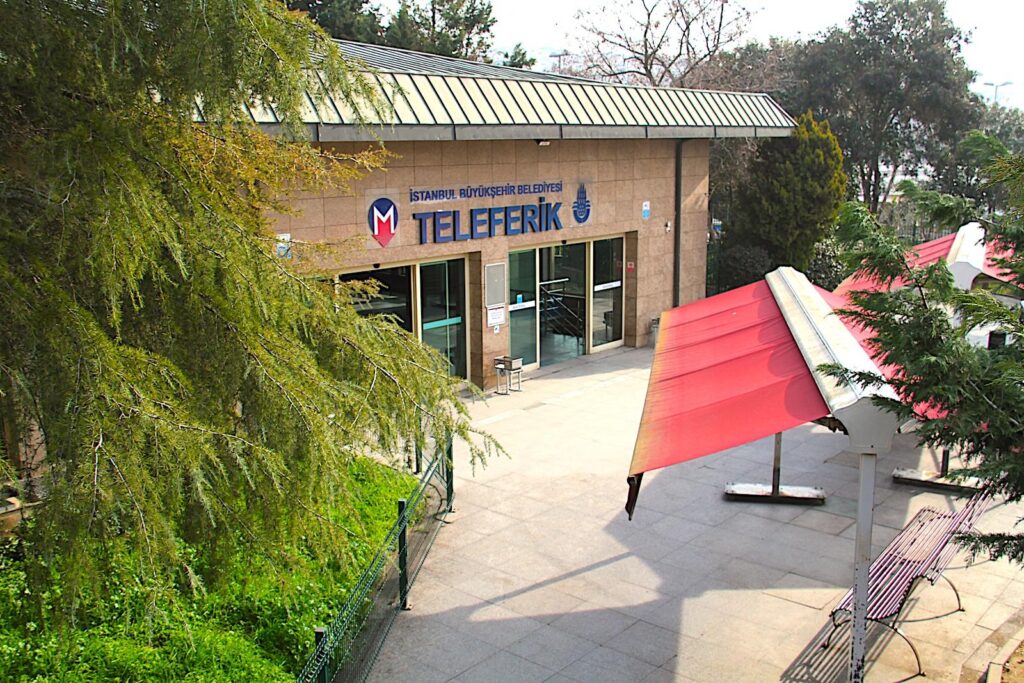
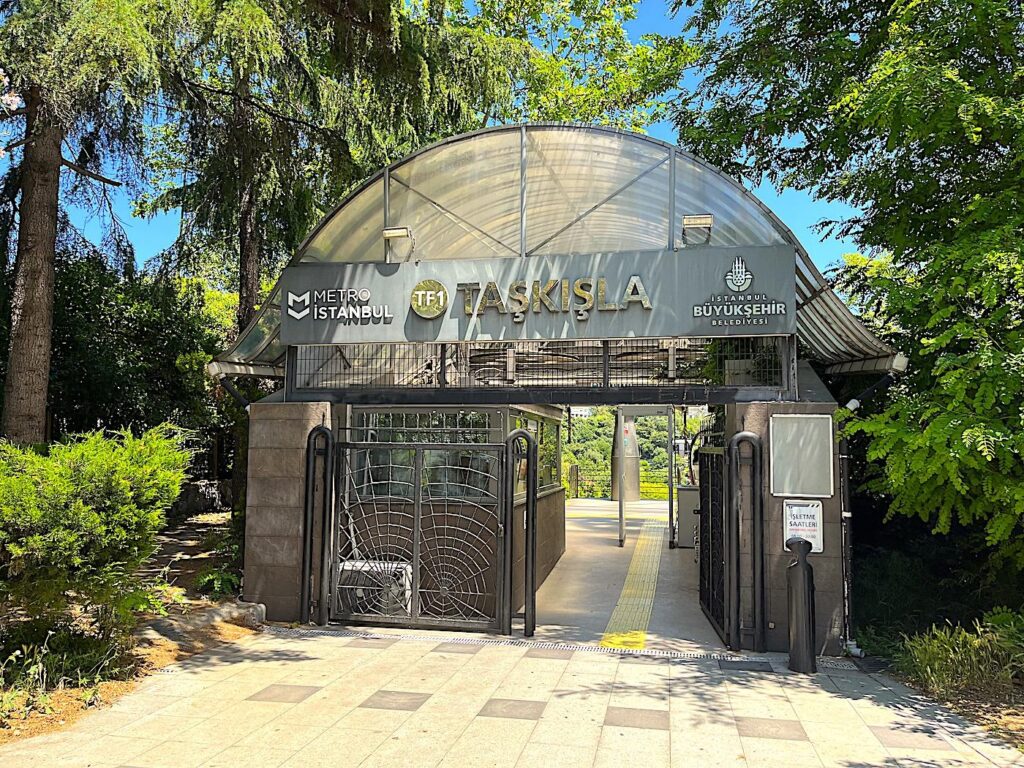
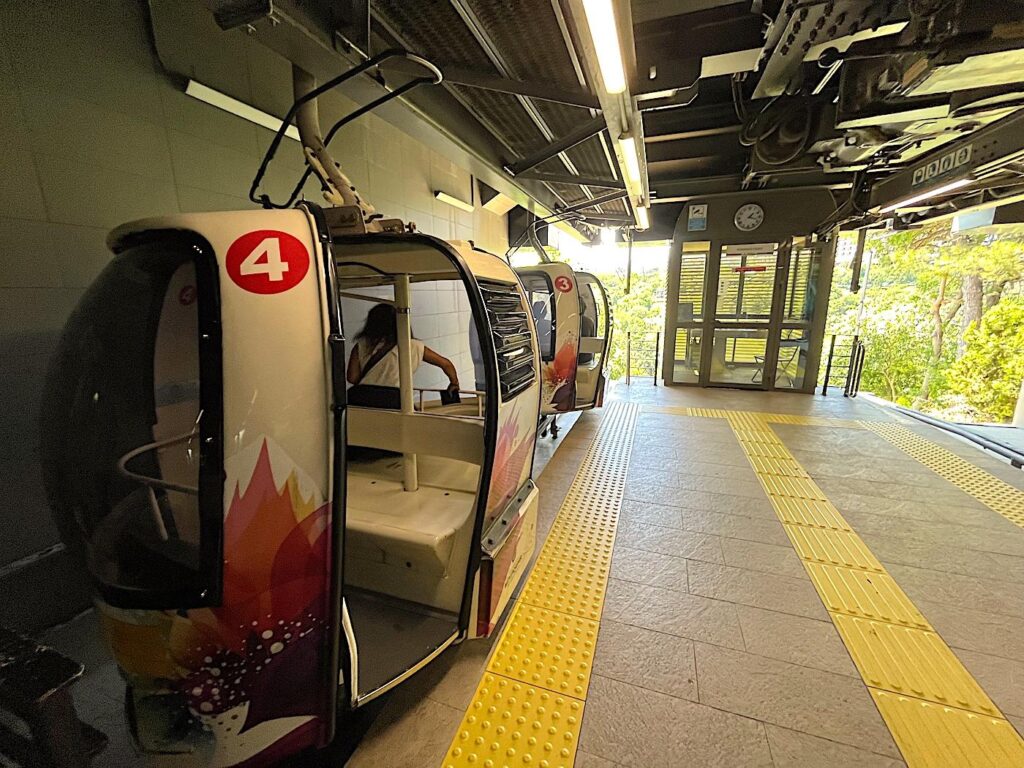
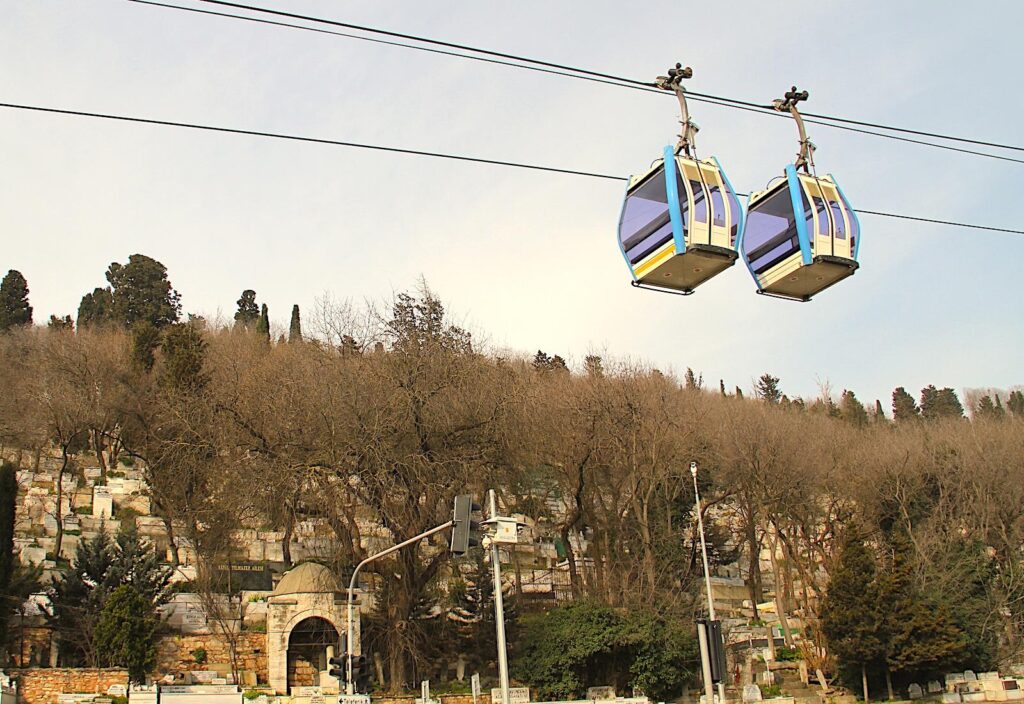
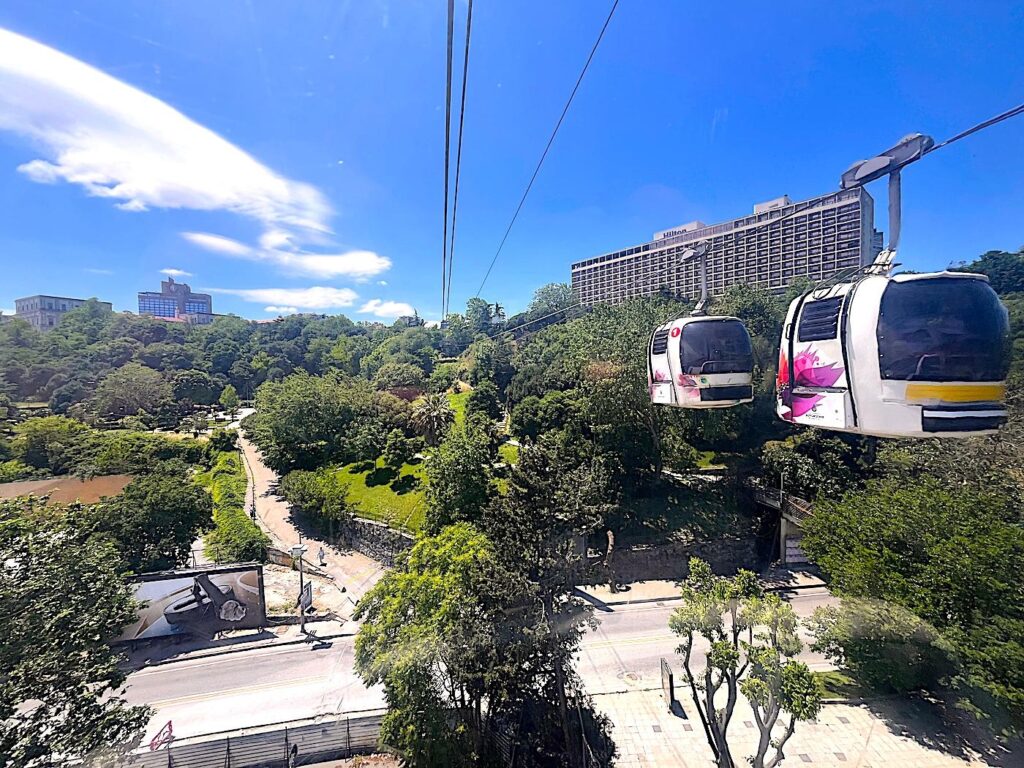
Complementing the funiculars, Istanbul transport also operates aerial cable car (teleferik) lines that provide scenic and practical access to elevated parts of the city. The TF1 Maçka–Taşkışla cable car offers a short but picturesque route above a park in central Istanbul, connecting two parts of the Şişli district near Taksim. The TF2 Eyüp–Pierre Loti line ascends the hill to the historic Pierre Loti Café, a popular vantage point overlooking the Golden Horn.
